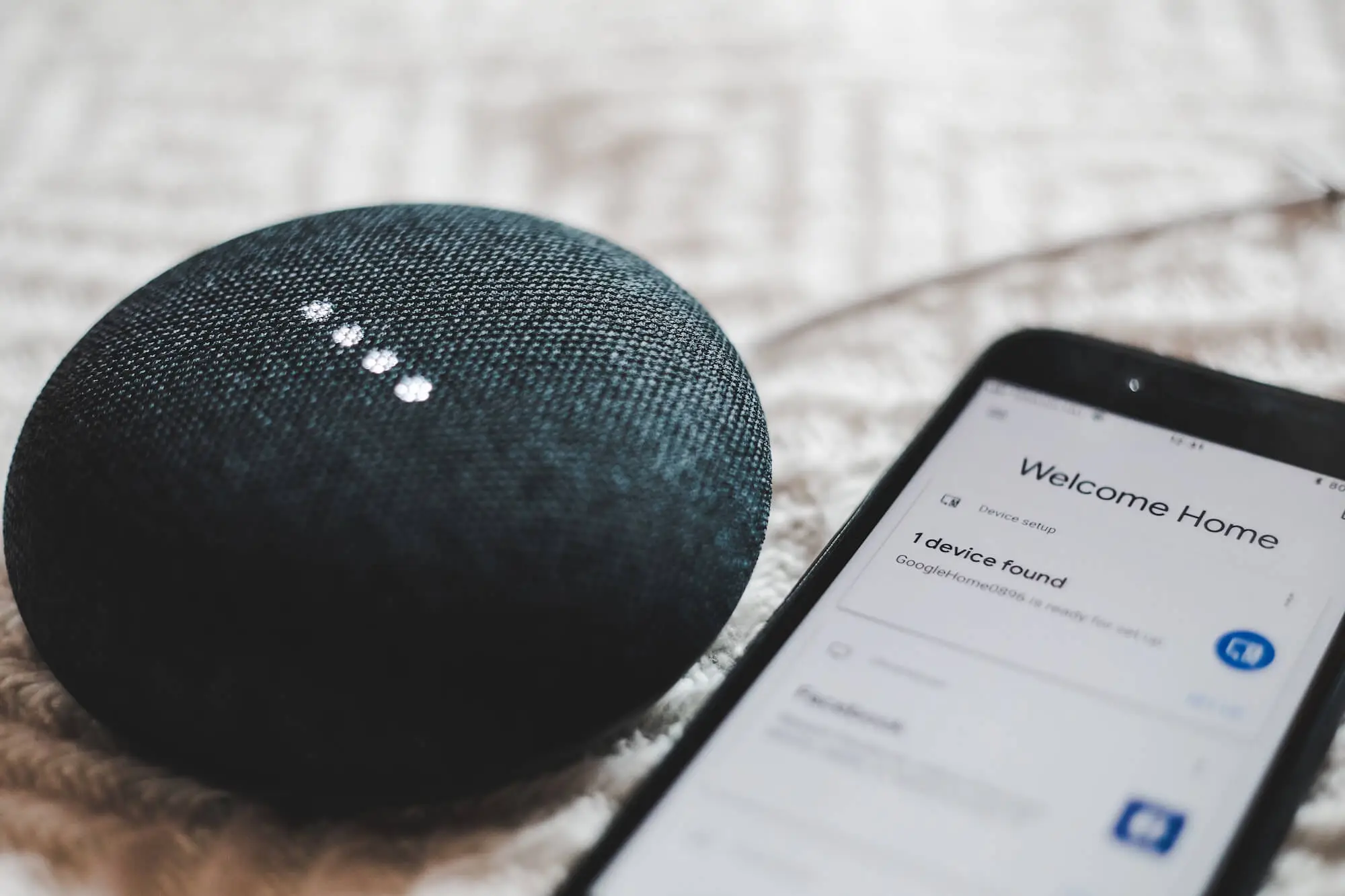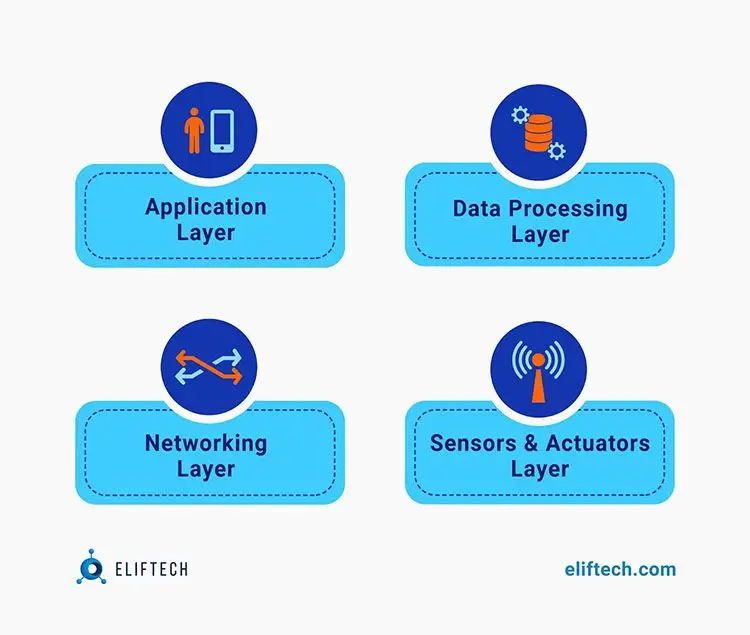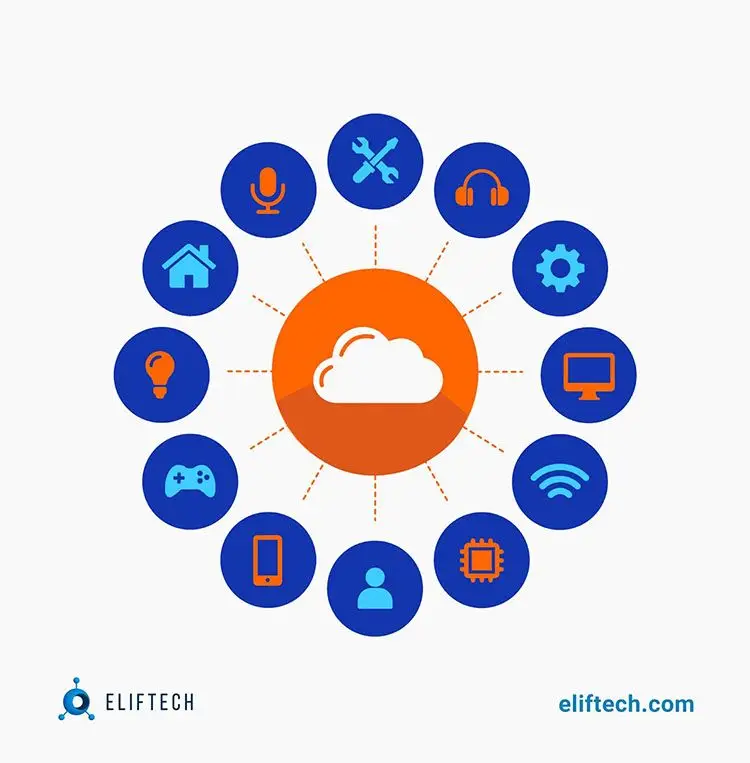Tech Guide
Everything You Need to Know about Building a Robust IoT Architecture

Data is driving today's businesses, and the Internet of Things (IoT) is helping to unlock new opportunities for growth and innovation. McKinsey’s study showed that global data witnessed a stunning 7x increase within four years. And as more and more IoT devices enter the market, more businesses acquire a need for robust IoT architecture able to manage complex and scalable systems.
“IoT effect” is one of the reasons for such rapid growth. By implementing IoT, architecture businesses across industries unlocked a new world of possibilities, reduced costs, enhanced customer experience, and moved ahead of the competition.
So, whether you're new to IoT or looking to optimize your existing architecture, this guide is your go-to resource. We'll take you through the fundamentals of IoT architecture, typical design patterns, and strategies for optimizing performance and data management.
Fundamentals of IoT Architecture
IoT architecture is a set of patterns and principles used to design, deploy, and manage IoT systems. Industrial IoT architecture typically consists of a few layers, making the whole system easier to manage, scale, and secure. The main goal is collecting, analyzing, and storing data from many devices, sensors, and systems.
Each traditional IoT layer is responsible for a particular function:
- Device layer — This layer consists of all types of IoT-enabled devices like sensors, actuators, and gateways that collect and transmit data from the physical world. Actuators are responsible for the control and manipulation of physical systems based on the data collected by other devices. Gateways use protocols like Zigbee, Wi-Fi, and Bluetooth to transmit data to the cloud or other systems for analysis.
- Communication layer — IoT is about the communication of multiple devices and the collection of data; this layer, in particular, has a vital role in this process. It defines how devices transmit data as well as manages and monitors device settings. The communication layer implies compatibility with multiple devices and protocols, security, low latency, and high bandwidth. The standard protocols include MQTT, CoAp, HTTP, AMQP, Bluetooth, Zigbee, and LoRaWAN.
- Data processing layer — transforms data into insights, with real-time processing, scalability, and compatibility using ML (machine learning) and AI support. Besides, it can have preprocessing and cleansing elements that help prepare data for the analysis. Combining IoT and AI technologies in your business is an effective way to significantly enhance the effectiveness of analytics..
- Storage layer — After the data has been collected, it goes to a repository from which other systems can access it. It involves storing data in repositories, including NoSQL databases and cloud-based platforms like Amazon S3 and Azure Blob Storage, which are scalable, reliable, and cost-effective storage solutions.
- Application layer — serves as a bridge between the end-user and the storage and processing layers. The goal of this layer is to present data in a convenient way to the end-user with dashboards, data visualization, notifications, and integration with other systems.
In combination, these IoT architecture layers extract insights and drive decision-making, strategy, and the creation of new products.

Common Design Patterns for IoT Architecture
Scalability, reliability, and security are essential elements of every IoT system. These are points you need to start from.
But to make sure your system works well, you need to choose the right way to set it up. There are different ways to do this and different types of IoT development services to use, depending on what you want to use your system for.
The four common IoT architecture design patterns are:
Hub and Spoke. A central hub device collects data from IoT devices placed at the spokes of the network. This hub device is in charge of processing and transmitting the data to the backend system or the cloud. This design pattern works more for industrial solutions with thousands of sensors and devices.
Edge Computing. Instead of processing and storing data on the cloud, this pattern processes real-time data on the edge devices like sensors or gateways. This design pattern allows for quick real-time processing and response.
Event-driven Architecture. This design pattern responds to changes in system status or data. It makes the IoT architecture more responsive and allows it to optimize the use of resources.
Client-server. Client servers are suitable for managing and monitoring a small number of devices. In this pattern, an IoT device becomes a client that sends data for processing and storing to the server.
4 Factors to Consider When Building IoT Architecture
IoT architecture is worth the run. It opens up new opportunities for business and keeps competitive advantage on a high level. Yet, there are challenges that must be addressed timely for the system to run smoothly and successfully. Here are some of them:
Interoperability
To ensure a successful IoT architecture, it should be scalable, secure, robust, and interoperable. For instance, internet of things app development usually comes with the challenges of integrating diverse devices and protocols and managing large volumes of data. You should consider the future and potential changes in business models, so the architecture won't hinder growth.
But how does interoperability look in practice? Let’s say you have a smart house. An interoperable architecture allows for the smooth integration of sensors and devices like thermostats or security cameras from different manufacturers. This prevents the owner from being tied to a single vendor.
Security
IoT is evolving rapidly, and off-the-shelf solutions don’t always match the needs of the business. In such cases, a custom IoT system can be more effective and secure. To achieve this, companies should evaluate their data needs and identify potential vulnerabilities.
There are many strategies to implement and enhance security, including encryption, authentication, and access controls. Business owners and tech teams should work together to identify potential issues with an IoT architecture and implement the best design. This process may possibly imply advice from a software consulting services.
ElifTech can help you select the most secure and reliable software IoT architecture. Contact us to find out more.
Data management
IoT devices generate large streams of data, and it’s vital to plan its transmission and storage. To establish an effective data management process, consider the following:
- Data volume. Traditional systems may struggle to handle the data generated by IoT devices. To manage data volume, consider distribution approaches such as edge and fog computing.
- Data variety. Different types of data, such as audio, video, and sensor data, require different tools for processing, analyzing, and storing.
- Data quality. Not all data generated by IoT devices is reliable or valuable. To prevent unnecessary data accumulation, employ cleansing and normalization techniques.
Energy Efficiency
Ensuring the energy efficiency of IoT devices is crucial as they often work on battery power. That’s why it’s essential to maximize their lifespan with the help of low-power wireless communication protocols and energy-efficient hardware. An effective IoT product development providers utilize energy-efficient design practices, and optimized software algorithms for these tasks.

Creating a Shield: Data Management and Security of IoT Architecture
IoT has come to transform businesses and bring digitalization to every corner. However, with digital changes come challenges. On the one hand, the IoT system is simple to use and install. On the other hand, it is a puzzle in which you need to find the perfect pieces. In particular, the issue of security and data management confuses many potential adopters of this technology. To make the best decision for your business and protect your IoT system, you need to consider the existing concerns and solutions:
Managing IoT Data
If you're worried about managing the large amounts of data generated by your IoT system, here are some solutions to help you optimize operations, reduce costs, and improve efficiency:
- High-speed data processing tools: they enable real-time data processing and industries where it’s critical to have quick access to user data (for example, in healthcare, they are applied to process the patient information fast, which in turn speeds up the process of writing a diagnosis and treatment plan).
Examples include Apache Kafka, Spark Streaming, and Flink.
- Flexible data management systems: they allow you to process data in different formats. When applied in retail, such systems help collect and analyze data on customers, their behaviors, and preferences to create personalized offers.
Examples include Hadoop Distributed File System and Apache Cassandra.
- Data cleansing tools: To make data consistent, structure it, and gain value from it, cleansing tools come in handy. They deal with large amounts of information and perform operations like eliminating duplicate and inconsistent pieces, identifying missing data, and format errors. Examples include AWS Glue and OpenRefine.
Fortifying IoT: Strategies for Building Secure Architecture in the Internet of Things
Despite previous attacks on IoT devices, businesses are still eager to adopt this technology today, and the market is expected to triple in 2030 compared to 2019. Investments will mostly come from such industries as agriculture, construction, manufacturing, transportation, and more.
However, security is now a top priority for IoT manufacturers and tech specialists. Here are some solutions to increase the security of your IoT architecture:
- Regular audits and vulnerability testing;
- Security measures such as encryption, authentication, and access controls;
- Secure communication protocols.
Optimizing Performance in the Architecture of IoT
Optimizing the performance of an IoT architecture requires a holistic approach to arranging every layer. It means that the system should work in a way that meets the client’s business needs.
For example, transportation companies need real-time data processing for route optimization. In manufacturing, tracking equipment in real-time allows the reduction of downtime and the identification of minor issues before they turn into major ones. These are just a couple of examples, and every business can assess its individual preferences and build a custom IoT architecture that will perform in perfect harmony with the strategic goals of the company.
Let’s go through the main performance optimization strategies you may want to consider for your own company:
- Cloud computing — ensures flexibility and scalability whenever the data volume increases. Hence, it can save costs on building an extended infrastructure on-premises. With its help, a business can also scale up whenever the data volume increases without a major capital investment.
- Stream processing — facilitates real-time analytics by finding patterns in data that are later used to predict future events. Stream processing is a great way to save data costs since it’s processed in real-time.
- Quality of service monitoring — helps companies take a closer look at performance issues and optimize the allocation of resources. Service monitoring makes sure the company’s IoT architecture complies with industry standards.
- Data compression — a perfect solution to reduce the network load. The less data is there to be transmitted, the less likely congestion is. Data compression helps lower the energy consumption of IoT devices. If devices are battery-powered, they will also help extend their lifespan.
Regardless of the budget, a business can always find suitable solutions by partnering with a reliable software development and consulting company like ElifTech. We’ll do the research for you and develop custom IoT architecture based on your particular requirements.
Navigating IoT Waters: Evaluation of IoT Architecture
Timely maintenance is the best practice to prevent work disruption, whether hardware or software. If you go for IoT system architecture, it’s crucial to practice end-to-end performance evaluation for more reliability and faster delivery.
How to evaluate your IoT architecture more efficiently in 5 simple steps?
- Select performance metrics. Pick some specific benchmarks to measure the metrics against, like network congestion, latency, etc.
- Collect data. Use IoT monitoring tools, network monitors, and application performance management tools to get a view of the whole architecture performance.
- Analyze. The collected material will help identify bottlenecks and speeds of data transmission and will allow assessment of the overall state of the architecture.
- Find improvement opportunities. This step is about the area that needs upgrading or implementing new IoT technologies, as well as optimization of data processing.
- Improve. After identifying the vulnerabilities, move to introduce the changes and upgrades and monitor to ensure they are working as expected.
Practical Applications of IoT Architecture
IoT technology is evolving, and most importantly, it is getting cheaper. As the price of devices goes down, the number of functionality adds up.
How can we use IoT architecture across various industries now?
Smart Agriculture
IoT sensors and devices have enabled farmers to collect data on crops, fertilizers, water, and energy use in harvesting, irrigating, and sowing seeds. Connected farming, for example, became a breakthrough for large enterprises and individual farmers.
John Deere, a leading agricultural equipment manufacturer, has introduced IoT sensors that collect data on nutrient deficiencies and measure moisture. This data allows farmers to optimize crop growth. The sensors collect data on nutrient deficiencies in the soil and measure moisture. Also, they produce drones to monitor crops and identify areas that need attention.
Smart City
Singapore, Amsterdam, Barcelona, and more cities around the world use IoT solutions to:
- optimize energy consumption and costs;
- reduce greenhouse emissions;
- minimize environmental damage.
Such innovations are already bringing in impressive results. Barcelona, for example, achieved almost a 25% reduction in energy consumption and a 20% reduction in greenhouse emissions.
Manufacturing
The main benefit of IoT for manufacturing is predictive maintenance. Major companies like General Electric and Bosch have introduced IoT solutions for equipment monitoring.
The data received is used to schedule maintenance, which saves thousands of dollars annually. Predictive maintenance reduces downtime and expands the lifespan of the tools and heavy machinery, hence saving the trouble of unexpected budget overruns.
Read more: Leveraging an IoT Monitoring System for Your Company
Eliftech Case: Architecture Consulting and Edge Software for an Industrial IoT Company
An Industrial IoT company came to us with the request to assist with the software development for an IoT solution built on AWS. The client was looking to enhance the mobility of the equipment operators, so they could open a tablet or smartphone anytime, anywhere, and check the status.
The ElifTech team of developers delivered software that enabled faster data collection, analysis, and real-time updates. We also created an intuitive dashboard with email, SMS, and dashboard notifications for users. By utilizing edge computing, we ensured that sensor data could be transmitted not only when connected to the cloud but also when disconnected.
Embrace IoT Architecture for Your Competitive Advantage
The IoT technology transforms and drives productivity for all business industries, whether manufacturing or healthcare. Technologies continue to evolve, and most already require a more scalable, flexible, and reliable IoT architecture.
By embracing IoT, businesses can improve the quality of their products, make their operations more sustainable, and increase customer satisfaction rates. While some businesses may have concerns about adopting new technology, the benefits of IoT far outweigh the risks. It’s a unique and affordable solution for long-term performance results.
The ElifTech team has extensive knowledge of building resilient and secure IoT solutions. If you are ready to transform your business and drive more revenue, let us know, and we’ll bring IoT into your business.
